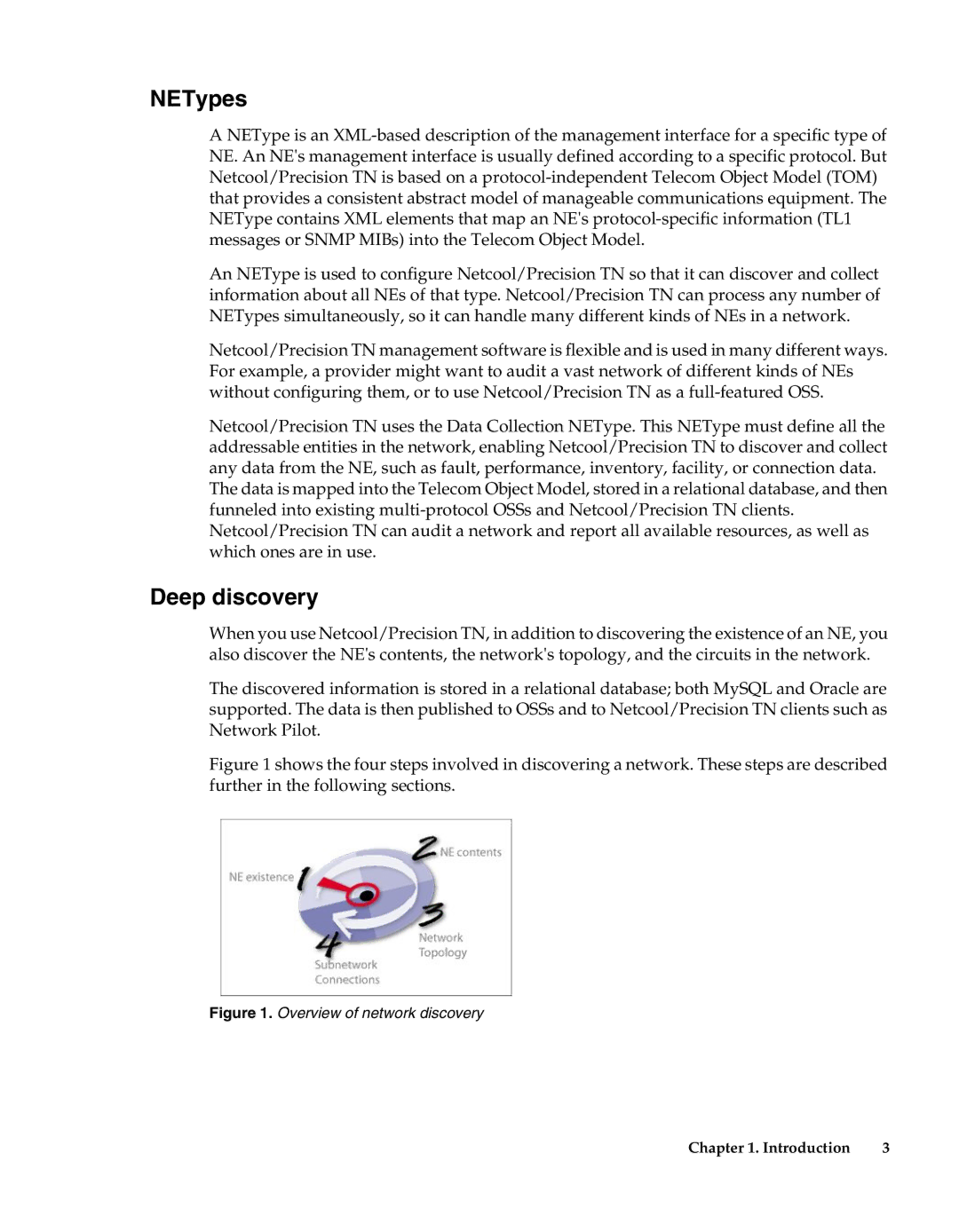
NETypes
A NEType is an
An NEType is used to configure Netcool/Precision TN so that it can discover and collect information about all NEs of that type. Netcool/Precision TN can process any number of NETypes simultaneously, so it can handle many different kinds of NEs in a network.
Netcool/Precision TN management software is flexible and is used in many different ways. For example, a provider might want to audit a vast network of different kinds of NEs without configuring them, or to use Netcool/Precision TN as a
Netcool/Precision TN uses the Data Collection NEType. This NEType must define all the addressable entities in the network, enabling Netcool/Precision TN to discover and collect any data from the NE, such as fault, performance, inventory, facility, or connection data.
The data is mapped into the Telecom Object Model, stored in a relational database, and then funneled into existing
Deep discovery
When you use Netcool/Precision TN, in addition to discovering the existence of an NE, you also discover the NE's contents, the network's topology, and the circuits in the network.
The discovered information is stored in a relational database; both MySQL and Oracle are supported. The data is then published to OSSs and to Netcool/Precision TN clients such as Network Pilot.
Figure 1 shows the four steps involved in discovering a network. These steps are described further in the following sections.
Figure 1. Overview of network discovery
Chapter 1. Introduction | 3 |
